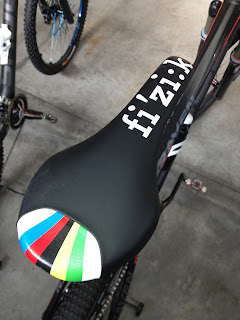Given the recent horsemeat scandal in the UK,
Anglophones would be appalled by our team doctor's nutritional advice. After having anlyzed my blood tests,
his advice was, “Eat meat (horse or beef) cooked medium rare, with a bit of lemon
juice and fine grain salt sprinkled on top.” Only in Italy do doctors double as chefs, and I have yet to meet an American doctor who would reccomend horse
meat to fulfill a dietary need. Italy is without a doubt the world leader when it comes to food, however
no two regions have the same specialties.
Each has it’s own culinary traditions. On the Focus XC Italy Team, we have 7 athletes who live in 5
different provinces, each with it’s own typical plate. Having lived in Verona for the past
years, I’ve become extremely fond of the local cuisine. After talking with my teammates about
their favorite foods, I would be curious to try out the tastes available
outside of Verona as well. The team doctor may not approve of all of our
favorite foods, but as I’ve always said, there are foods for the mind and foods
for the legs…
Peara’
This Veronese delicacy is my personal favorite. It is a simple dish made from grated
bread, butter, fat, Grana, with some pepper and salt thrown in as well. It resembles mashed potatoes or grits, but with a taste uniquely Veronese. It is quite heavy, so I wouldn’t reccomend
it before a race, and given its fat content, it's great to warm oneself up in the
winter, but in the summer it would be nearly impossibile to eat without the
airconditioning on full blast.
Here’s a better description of what Peara' really is by two true Veronesi:
Spezzatino
Andrea Righettini, hailing from Cazzano in the Trento
Province, says that if there is one plate that he can’t refuse it’s spezzatino
accompanied by polenta, cheese and mushrooms. From a foreigner’s point of view it looks a lot like an
Irish stew. Much like in Ireland,
it gets a bit chilly in the Trento region, so a hot stew with meat and potatoes helps to get through the
winter.
Pizzocheri
Jenny Fontana, from Tirano in the Province of Brescia could
just about walk to the Swiss boader from her front door. Being from the mountains she, like Andrea, prefers hearty foods, particularly Pizzocheri, a heavy pasta and potato dish high in calories and
fat content- perfect for the cold mountain climate.
Canederli
Belatin Schmid and Fabian Rabensteiner both come from the
Bolzano region of Italy, which has strong historical ties to Austria. Both riders speak both German and
Italian, and likewise both love Canederli. This typical Alto Adige dish looks much more like something one would find on the northen side of the Alps. They are large dumplings often served in a light broth.
Fabian, from Chiusa, the last exit on the freeway before the
Austrian boarder, prefers his Canederli with Finferli, a type of mushroom.
Of course, before races we do our best to eat the classic Italian pasta, generally in bianco – with olive oil and some
grana cheese for flavor. Going
from region to region for the various races on our busy schedule, it’s not always easy not to indulge in the local
taste-treats. Don’t tell the
doctor!
When in Rome...


































